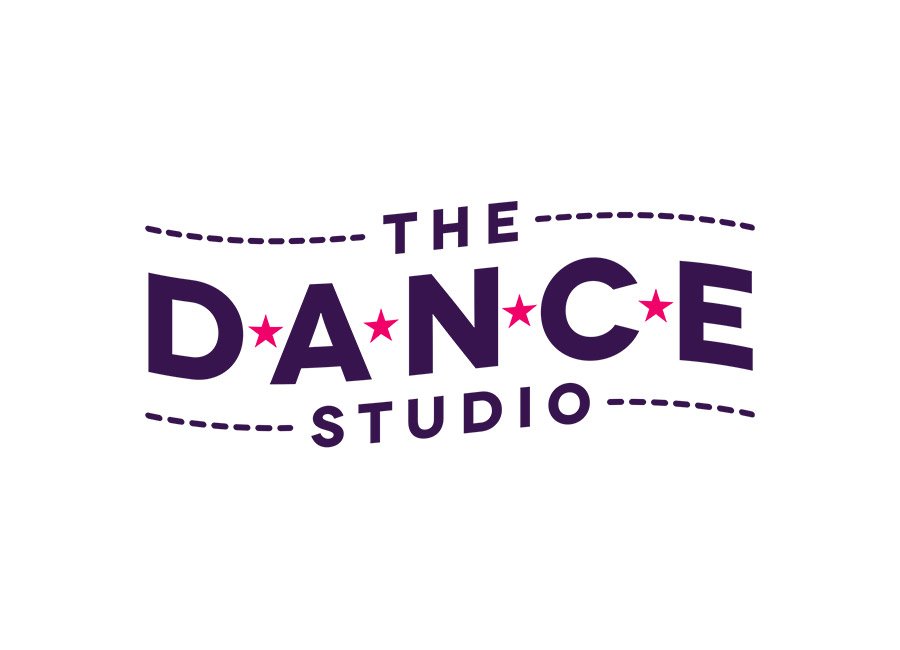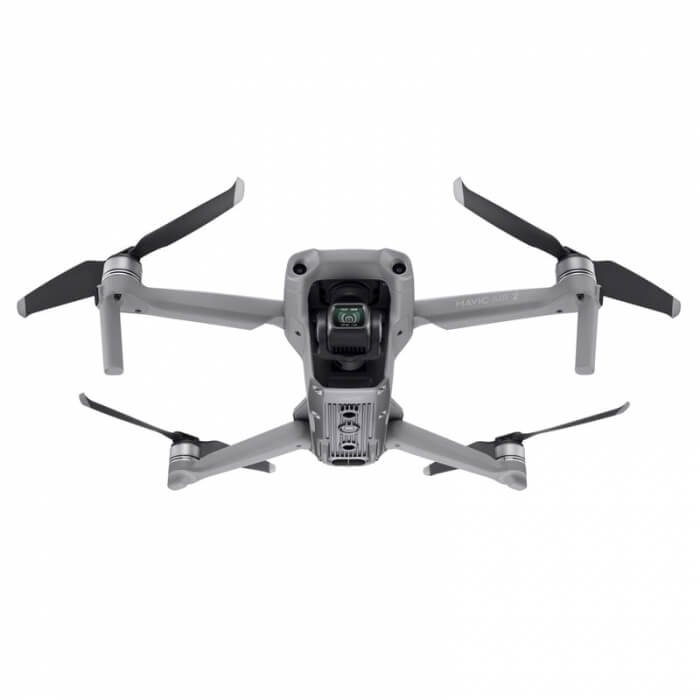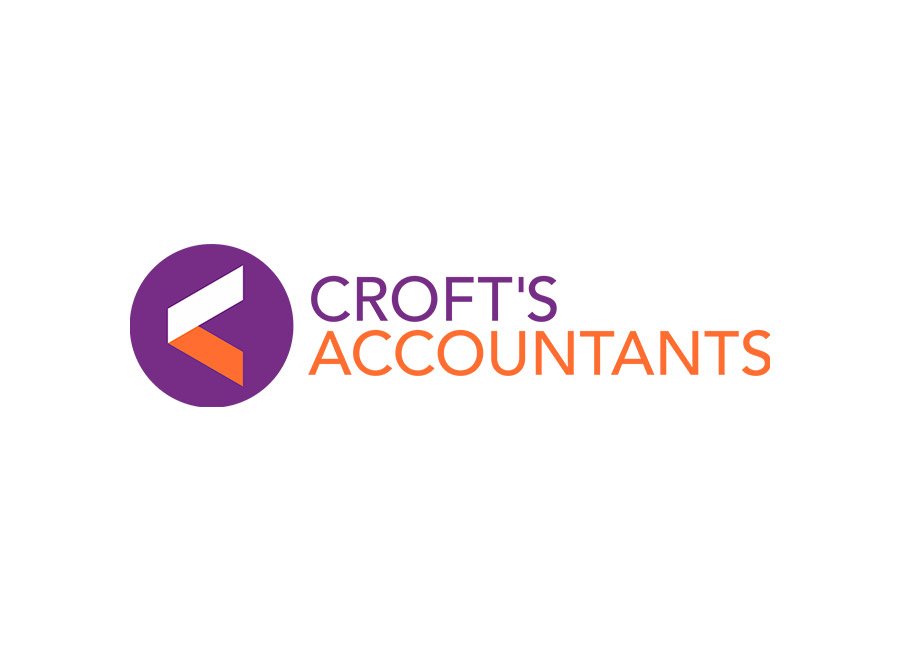F5-related Budd–Chiari syndrome means Budd–Chiari syndrome (BCS) that happens in a person who carries the Factor V Leiden (F5 G1691A) mutation. In BCS, blood cannot leave the liver properly because the hepatic veins (and sometimes the inferior vena cava) are blocked, usually by a clot. The liver swells, pressure rises, and fluid collects in the abdomen. Factor V Leiden is a common inherited change in the F5 gene that makes clots more likely, including clots at unusual sites such as the liver. NCBI+2NCBI+2
F5-related Budd-Chiari syndrome means the veins that drain blood out of the liver are blocked by a clot (thrombosis), and the person carries a change (mutation) in the F5 gene called Factor V Leiden. This mutation makes the blood clot more easily. When a clot blocks the hepatic veins or the inferior vena cava (IVC) near the liver, blood cannot leave the liver, so the liver swells, fluid builds up in the belly (ascites), and the person may feel abdominal pain, liver enlargement, or leg swelling. Doctors confirm the diagnosis with imaging (ultrasound with Doppler, CT, or MRI) and test for blood clotting disorders including the F5 mutation. Treatment follows a step-wise plan: start with anticoagulation (blood thinners), then recanalization (angioplasty/stent) if a short blockage is present, then TIPS (a shunt created inside the liver) if needed, and finally liver transplant if nothing else works. NCBI+2journal-of-hepatology.eu+2
Factor V Leiden is the most common inherited thrombophilia in many populations. It raises the risk of vein clots, including a clear association with Budd-Chiari syndrome. Meta-analyses show Factor V Leiden significantly increases BCS risk, so finding this mutation helps explain why clots formed and helps guide lifelong clot prevention planning. PubMed+1
Factor V Leiden makes factor V resistant to activated protein C, so the body’s “brake” on clotting works less well. People with this mutation have a higher risk of venous clots; the risk is higher with two copies than with one. Studies and meta-analyses show the mutation is over-represented in Budd–Chiari syndrome compared with controls. This means F5 (Factor V Leiden) is one of the inherited reasons some people with BCS form clots in the hepatic veins. NCBI+2PLOS+2
Other names
-
Budd–Chiari syndrome (BCS)
-
Hepatic venous outflow tract obstruction (HVOTO)
-
Hepatic vein thrombosis
-
Inferior vena cava (IVC) obstruction related to hepatic outflow
-
Factor V Leiden–associated Budd–Chiari (descriptive term used in reports/reviews) PMC
Types
By cause at the vein wall
-
Primary BCS – clot/inflammation inside the hepatic veins or IVC (most cases).
-
Secondary BCS – outside pressure or invasion of the vein (e.g., tumor, abscess) that blocks flow. NCBI+1
By where the blockage is
-
Hepatic veins only
-
IVC only
-
Combined hepatic veins + IVC PMC
By how fast it develops
-
Fulminant/acute – sudden pain, big liver, jaundice, fast liver failure.
-
Subacute – weeks to months, ascites and enlarged spleen.
-
Chronic – slow scarring, portal hypertension, big abdominal veins. www.elsevier.com
Causes
Note: BCS is multifactorial—many patients have more than one pro-clotting factor. Below are common contributors and “second hits.” www.elsevier.com
-
Factor V Leiden (F5 G1691A) – the core inherited risk in “F5-related” disease; increases hepatic-vein clot risk, especially with triggers. NCBI+1
-
Prothrombin G20210A (F2) – another inherited thrombophilia that can combine with F5. NCBI
-
Myeloproliferative neoplasms (PV, ET, MF), often with JAK2 V617F – the leading acquired cause of BCS in many cohorts. PMC
-
Antiphospholipid syndrome – autoimmune anticlotting protein interference with recurrent thrombosis. NCBI
-
Paroxysmal nocturnal hemoglobinuria (PNH) – complement-mediated hemolysis with strong clot risk. NCBI
-
Oral contraceptives or estrogen therapy – estrogen raises clot risk; effect can be greater with F5 Leiden. MedlinePlus
-
Pregnancy and postpartum – pro-thrombotic state; risk stacks with F5 Leiden. MedlinePlus
-
Cancer (e.g., hepatocellular carcinoma, renal cell carcinoma) – can invade or compress the IVC/hepatic veins. NCBI
-
Congenital IVC webs/membranes – structural narrowing that favors clot. PMC
-
Behçet disease – systemic vasculitis with venous thrombosis. NCBI
-
Infections/inflammation that injure endothelium – local pro-thrombotic changes. NCBI
-
Obesity and smoking – general venous thromboembolism risks that add to inherited risks. MedlinePlus
-
Major surgery or trauma – transient immobility and tissue injury trigger clots. MedlinePlus
-
Catheters or devices in the IVC – local damage and stasis. NCBI
-
Dehydration and prolonged immobility – increase blood viscosity and stasis. NCBI
-
Inflammatory bowel disease and systemic inflammation – hypercoagulability. NCBI
-
Nephrotic syndrome – loss of anticoagulant proteins, higher clot risk. NCBI
-
Protein C, Protein S, or Antithrombin deficiency – add-on inherited thrombophilias. onlinelibrary.wiley.com
-
Corticosteroids or chemotherapy – drug-related thrombotic risk in some settings. NCBI
-
Unknown/idiopathic – despite a full work-up, some cases have no single clear cause. NCBI
Symptoms
-
Abdominal pain (usually right upper side) – the swollen, congested liver stretches its capsule and hurts. NCBI
-
Ascites (fluid-filled, swollen belly) – blocked outflow raises liver sinus pressure; fluid leaks into the abdomen. NCBI
-
Hepatomegaly (enlarged liver) – blood pooling and congestion make the liver bigger. NCBI
-
Jaundice (yellow eyes/skin) – bile flow slows when liver cells are under pressure. www.elsevier.com
-
Leg swelling – fluid backs up and low albumin worsens edema. NCBI
-
Weight gain and abdominal girth increase – mainly from ascites. NCBI
-
Nausea and poor appetite – pressure and inflammation reduce normal liver function. NCBI
-
Enlarged spleen – portal pressure rises and the spleen grows. NCBI
-
Visible abdominal wall veins – blood finds collateral paths around the blockage. PMC
-
Variceal bleeding – high portal pressure creates fragile veins that can bleed. NCBI
-
Shortness of breath – very tense ascites pushes on the diaphragm. NCBI
-
Fatigue and weakness – chronic liver congestion and anemia from hypersplenism. NCBI
-
Itching – from cholestasis if bile flow is impaired. NCBI
-
Sudden liver failure (rare, fulminant cases) – fast onset with confusion and bleeding risk. www.elsevier.com
-
No symptoms, found on imaging – some people are diagnosed during work-up for ascites or abnormal tests. PMC
Diagnostic tests
A) Physical examination
-
General inspection and vitals – looks for jaundice, fever, fast heart rate, and signs of distress; these support an acute process. NCBI
-
Abdominal exam – checks for tenderness and a big liver; pain in the right upper quadrant is common. NCBI
-
Shifting dullness and fluid wave – bedside maneuvers to confirm ascites. NCBI
-
Look for enlarged spleen and abdominal wall veins – point toward portal hypertension from outflow block. PMC
-
Check for ankle edema – suggests low albumin and venous congestion. NCBI
B) “Manual”/bedside procedural tests
-
Diagnostic paracentesis – a small needle removes fluid to test protein and albumin (SAAG), rule out infection, and guide care. In BCS, ascites often has high protein because hepatic sinusoids are under pressure. NCBI
-
Bedside ultrasound screening – a focused scan may show large liver, ascites, and absent hepatic-vein flow, prompting full Doppler. PMC
-
Point-of-care Doppler assessment – confirms lack of normal venous waveforms if expertise is available. gastrojournal.org
-
Therapeutic paracentesis – not diagnostic by itself, but large-volume removal of fluid confirms the ascites is real and relieves symptoms while the work-up proceeds. NCBI
-
Bedside stool/bleeding check – looks for portal-hypertensive bleeding (e.g., melena) that might change urgency and imaging plans. NCBI
C) Laboratory and pathological tests
-
Liver panel (AST/ALT, bilirubin, ALP, albumin) – shows a mixed pattern; bilirubin and enzymes may be elevated; albumin may be low. Helps stage severity. NCBI
-
Complete blood count – may show polycythemia or thrombocytosis in myeloproliferative disease, or cytopenias from hypersplenism. aasld.org
-
Thrombophilia panel – DNA test for F5 Leiden (and F2 G20210A), plus protein C/S and antithrombin; results reveal inherited risks and guide long-term anticoagulation. NCBI+1
-
JAK2 V617F testing – looks for a myeloproliferative neoplasm, the top acquired cause in many series. PMC
-
Antiphospholipid antibodies (lupus anticoagulant, aCL, anti-β2GP1) – identify antiphospholipid syndrome. NCBI
-
Liver biopsy (selected cases) – rarely needed for diagnosis; may show centrilobular congestion and fibrosis when imaging is unclear; also helps stage chronic damage. PMC
D) Electrodiagnostic / physiologic and hemodynamic tests
-
Hepatic venography with pressure measurements (HVPG) – catheter study that directly shows the blockage and measures pressure gradients; used when imaging is uncertain or before an intervention. PMC
-
Endoscopy for varices – not electrical, but a physiologic portal-hypertension assessment that discovers esophageal or gastric varices caused by the outflow block. aasld.org
E) Imaging tests
-
Doppler ultrasound (first-line test) – fast, bedside-ready, and highly accurate. It shows absent or reversed flow in hepatic veins, collaterals, and caudate lobe changes. Meta-analysis supports good sensitivity/specificity; guidelines place Doppler as the initial study. PMC+1
-
CT venography – maps thrombosis, webs, and IVC involvement; shows caudate lobe enlargement and heterogeneous enhancement typical of BCS. PMC+1
-
MR venography – excellent for vein patency and liver tissue changes without radiation; complements CT and Doppler. PMC
-
Catheter venography (gold standard when needed) – directly visualizes and can treat (angioplasty/stent) in one session. Used when imaging is equivocal or before an intervention. PMC
-
Elastography (e.g., transient or MR) – estimates liver stiffness; helps follow chronic congestion and fibrosis over time. PMC
-
IVC imaging (targeted CT/MR/US) – looks for membranes/webs or external compression near the diaphragm that may need endovascular therapy. PMC
-
Chest/heart imaging when indicated – rules out cardiac/pericardial causes of hepatic congestion to confirm “true” BCS. NCBI
Non-pharmacological treatments (therapies & others)
-
Immediate care and monitoring
In acute BCS, start with hospital care to watch vital signs, urine output, and lab tests (liver enzymes, INR, creatinine). Early care prevents shock, kidney injury, and brain swelling. Purpose: keep organs safe while the cause is treated. Mechanism: frequent checks catch complications early; oxygen, IV fluids, and careful diuresis support circulation without overloading the liver. EASL-The Home of Hepatology. -
Salt restriction for ascites
Eating less salt (sodium) helps control ascites (belly fluid). Purpose: reduce fluid build-up so breathing and comfort improve. Mechanism: salt pulls water into the body; cutting salt lowers water retention and portal pressure-related fluid leakage. Typical advice: avoid processed foods and do not add salt when cooking. This is standard in portal hypertension and liver disease nutrition care. journal-of-hepatology.eu+1 -
Optimized nutrition & frequent meals
People with liver congestion can lose muscle and energy. Purpose: prevent malnutrition, frailty, and sarcopenia. Mechanism: eat adequate protein (about 1.2–1.5 g/kg/day) and frequent small meals, including a complex-carb late-evening snack to avoid long fasting and muscle breakdown overnight. Dietitians use liver-specific nutrition guidelines to tailor calories, protein, and vitamins. PMC+2PMC+2 -
Avoid estrogen exposure and pro-thrombotic hormones
Combined estrogen oral contraceptives and some hormone therapies can raise clot risk, especially in people with Factor V Leiden. Purpose: lower risk of new clots. Mechanism: removing estrogen reduces coagulation activation, so the chance of another hepatic vein clot goes down. Discuss alternative birth control methods that do not increase clot risk. journal-of-hepatology.eu -
Stop smoking
Smoking increases overall venous thrombosis and cardiovascular risks. Purpose: reduce blood clot risk and improve healing. Mechanism: quitting reduces endothelial injury and platelet activation, and improves lung and heart function during procedures like TIPS or surgery. journal-of-hepatology.eu -
Alcohol moderation or abstinence
Alcohol can worsen liver inflammation, fibrosis, and ascites. Purpose: protect liver reserve and make procedures safer. Mechanism: less alcohol lowers hepatocellular damage, reduces fluid retention, and helps nutrition plans work better. Guidance on alcohol limits is part of chronic liver disease care. journal-of-hepatology.eu -
Vaccination (hepatitis A & B, influenza, pneumococcal)
In chronic liver disease or after TIPS/transplant, infection risk is higher. Purpose: prevent hepatitis and respiratory infections that could tip the liver into decompensation. Mechanism: vaccines reduce viral and bacterial infections that otherwise strain the liver. journal-of-hepatology.eu -
Compression stockings & mobility
If swelling involves the legs or IVC, graduated compression and early walking can help venous flow. Purpose: lower risk of deep vein thrombosis (DVT) and improve symptoms. Mechanism: compression supports venous return; walking activates the calf muscle pump, reducing stasis. These steps are supportive to medical anticoagulation. journal-of-hepatology.eu -
Paracentesis (therapeutic)
When ascites is tense and painful, doctors can drain fluid with a needle. Purpose: quickly relieve breathlessness and abdominal pressure. Mechanism: removing fluid reduces intra-abdominal pressure and improves kidney blood flow; albumin may be infused to maintain circulation. It is supportive while definitive BCS therapy proceeds. EASL-The Home of Hepatology. -
Endovascular angioplasty ± stent (recanalization)
If imaging shows a short web/stenosis in a hepatic vein or the IVC, a radiologist can open it with a balloon and sometimes place a stent. Purpose: restore outflow without major surgery. Mechanism: re-establishing a channel reduces liver congestion and ascites; patency is monitored by Doppler ultrasound. EASL-The Home of Hepatology. -
Transjugular intrahepatic portosystemic shunt (TIPS)
If symptoms persist despite anticoagulation or angioplasty, TIPS creates a low-resistance path for blood within the liver, lowering pressures and ascites. Purpose: control ascites and portal hypertension and improve survival in selected patients. Mechanism: a stent connects a hepatic vein to the portal vein, bypassing the blockage. EASL-The Home of Hepatology. -
Surgical shunts (when TIPS not possible)
Some patients need a surgical portosystemic shunt if TIPS cannot be done or fails. Purpose: provide durable decompression. Mechanism: surgery connects portal venous blood to systemic veins to relieve pressure. Use has declined with modern TIPS but remains an option in expert centers. EASL-The Home of Hepatology. -
Liver transplantation
For liver failure or untreatable BCS, transplant replaces the damaged liver. Purpose: cure portal hypertension and restore liver function. Mechanism: a new liver with normal outflow eliminates the block; patients still need clot-risk management post-transplant if F5-related. EASL-The Home of Hepatology. -
Multidisciplinary thrombosis clinic follow-up
Regular check-ins with hepatology, interventional radiology, and hematology optimize long-term outcomes. Purpose: adjust anticoagulation, check stent/TIPS patency, and manage nutrition and vaccines. Mechanism: coordinated care catches re-thrombosis or shunt dysfunction early. www.elsevier.com -
Patient education on bleeding/clot warning signs
Patients on blood thinners must know signs of bleeding (black stools, unusual bruising) and clots (new swelling, chest pain). Purpose: prompt action prevents severe events. Mechanism: education leads to early emergency care when needed. FDA Access Data+1 -
Medication review to avoid drug interactions
Certain drugs (e.g., rifampin, phenytoin, carbamazepine, some herbals) interact with DOACs and warfarin. Purpose: keep anticoagulation effective and safe. Mechanism: stopping or replacing interacting drugs stabilizes anticoagulant levels. FDA Access Data -
Exercise and resistance training (as tolerated)
Gentle, structured activity helps muscle mass and insulin sensitivity. Purpose: fight sarcopenia and fatigue. Mechanism: resistance exercise stimulates muscle protein synthesis; supervised plans are recommended in chronic liver disease nutrition guidance. PMC -
Sleep and stress management
Poor sleep and stress worsen fatigue, appetite, and adherence. Purpose: improve quality of life and recovery. Mechanism: regular sleep schedules and stress-reduction techniques support neuro-hormonal balance and nutrition. Guidance is embedded in holistic liver care recommendations. espen.org -
Sodium-aware cooking and label reading
Practical teaching on reading food labels and preparing low-salt meals helps maintain the plan outside hospital. Purpose: sustain long-term ascites control. Mechanism: consistent sodium restriction prevents fluid re-accumulation. journal-of-hepatology.eu -
Late-evening complex-carb snack
A bedtime snack with complex carbohydrates limits overnight muscle breakdown. Purpose: protect lean body mass and energy. Mechanism: supplies glucose through the night, reducing the need to break down muscle for fuel—an approach recommended in several liver nutrition guidelines. SpringerOpen+1
Drug treatments
(Key drugs used in BCS care; FDA label sources shown. Most anticoagulants are used to treat or prevent venous thrombosis; some uses in BCS are extrapolated from VTE guidance and expert consensus due to disease rarity. Doses are typical adult regimens—individualize with your clinician.)
Anticoagulants (foundation of BCS care)
-
Unfractionated heparin (UFH), intravenous — 150 words; class, dose, time, purpose, mechanism, side effects
Class: Anticoagulant. Purpose: Start fast anticoagulation in acute BCS or peri-procedure. Dose/Time: Weight-based IV bolus then infusion with aPTT monitoring; rapid on/off. Mechanism: Activates antithrombin, inhibiting thrombin (IIa) and factor Xa, stopping clot growth. Side effects: bleeding, heparin-induced thrombocytopenia (HIT), osteoporosis with long use. UFH is useful when procedures or reversal are anticipated because it clears quickly. EASL-The Home of Hepatology. -
Enoxaparin (LOVENOX®, LMWH)
Class: Low-molecular-weight heparin. Purpose: Treat or bridge venous thrombosis in BCS. Dose/Time: 1 mg/kg SC every 12 h or 1.5 mg/kg SC daily for DVT/PE; adjust in renal impairment. Mechanism: Potentiates antithrombin; preferentially inhibits factor Xa, less IIa. Side effects: bleeding; rare HIT; spinal/epidural hematoma risk. LMWH is often used early because dosing is predictable and there is no routine lab monitoring. FDA Access Data -
Fondaparinux (ARIXTRA®)
Class: Synthetic pentasaccharide anticoagulant. Purpose: Alternative in HIT risk or when LMWH not suitable. Dose/Time: 5–10 mg SC daily by weight for acute VTE. Mechanism: Selective factor Xa inhibition via antithrombin; no effect on thrombin. Side effects: bleeding; spinal/epidural hematoma risk in neuraxial anesthesia; avoid in severe renal impairment. FDA Access Data -
Warfarin (COUMADIN®)
Class: Vitamin K antagonist (VKA). Purpose: Long-term anticoagulation after initial heparin/LMWH, especially where DOACs are unsuitable. Dose/Time: Start low dose; adjust to INR goal typically 2–3 (individualize). Mechanism: Blocks vitamin K-dependent clotting factors II, VII, IX, X; takes days to work, so bridge with heparin initially. Side effects: bleeding; many drug/food interactions; need INR monitoring. FDA Access Data -
Apixaban (ELIQUIS®)
Class: Direct oral anticoagulant (DOAC), factor Xa inhibitor. Purpose: Long-term VTE treatment/prevention; used off-label in some BCS settings when liver function and interactions allow. Dose/Time: 10 mg BID for 7 days, then 5 mg BID (typical VTE regimen). Mechanism: Direct Xa inhibition preventing thrombin generation. Side effects: bleeding; spinal/epidural hematoma risk; interactions with strong P-gp/CYP3A4 modulators. FDA Access Data -
Rivaroxaban (XARELTO®)
Class: DOAC, factor Xa inhibitor. Purpose: Similar to apixaban for VTE; sometimes chosen for long-term therapy. Dose/Time: 15 mg BID for 21 days, then 20 mg daily with food (VTE regimen). Mechanism: Direct Xa inhibitor. Side effects: bleeding; boxed warning on premature discontinuation; multiple drug interactions. FDA Access Data -
Dabigatran (PRADAXA®)
Class: DOAC, direct thrombin (IIa) inhibitor. Purpose: Option for VTE treatment after 5–10 days of parenteral anticoagulant. Dose/Time: 150 mg BID (typical adult VTE regimen); adjust for renal function. Mechanism: Directly inhibits thrombin, preventing fibrin formation. Side effects: bleeding; spinal/epidural hematoma risk; dyspepsia. Note: Needs initial heparin lead-in for VTE. FDA Access Data
Thrombolytics (select cases; specialist-directed)
-
Alteplase (ACTIVASE®)
Class: Thrombolytic (tPA). Purpose: Catheter-directed thrombolysis in selected acute BCS with fresh clot and severe symptoms. Dose/Time: Interventional radiology uses local infusion protocols. Mechanism: Converts plasminogen to plasmin, dissolving clot. Side effects: major bleeding, especially intracranial; strict contraindications apply. FDA Access Data -
Tenecteplase (TNKASE®)
Class: Thrombolytic. Purpose: An alternative tPA in some centers for catheter-directed lysis (protocol-dependent). Dose/Time: Interventional dosing varies; systemic dosing approved for STEMI. Mechanism: Fibrin-specific plasminogen activator. Side effects: major bleeding; follow strict contraindications. FDA Access Data
Ascites and complication management
-
Spironolactone (ALDACTONE® / CAROSPIR®)
Class: Aldosterone antagonist diuretic. Purpose: First-line diuretic for ascites due to portal hypertension from BCS. Dose/Time: Often 100 mg daily, titrating with furosemide in a 100:40 ratio; monitor potassium and creatinine. Mechanism: Blocks aldosterone at the distal tubule, promoting sodium/water loss and potassium retention. Side effects: high potassium, low sodium, breast tenderness. FDA Access Data+1 -
Furosemide (FUROSEMIDE / FUROSCIX®)
Class: Loop diuretic. Purpose: Combined with spironolactone for ascites control. Dose/Time: Often 40 mg daily (adjust individually); IV for acute diuresis. Mechanism: Blocks Na-K-2Cl transporter in the loop of Henle, causing strong diuresis. Side effects: low potassium, low sodium, dehydration, kidney function changes, ototoxicity at high doses. FDA Access Data+1 -
Lactulose (KRISTALOSE®/Generics)
Class: Non-absorbable disaccharide. Purpose: Prevent/treat hepatic encephalopathy if it appears with liver congestion/failure. Dose/Time: Titrate to 2–3 soft stools/day. Mechanism: Acidifies colon content, traps ammonia as ammonium and reduces absorption. Side effects: bloating, diarrhea. FDA Access Data
Other useful medications in selected scenarios (case-by-case)
-
Propranolol (INDERAL®/INNOPRAN XL®)
Class: Non-selective beta-blocker. Purpose: If varices develop from portal hypertension, non-selective beta-blockers may be used for bleeding prevention (per portal HTN practice). Mechanism: Lowers portal inflow via beta-blockade. Side effects: bradycardia, hypotension, fatigue. FDA Access Data -
Albumin (IV)
Class: Plasma expander. Purpose: Given with large-volume paracentesis to maintain circulation. Mechanism: Increases plasma oncotic pressure and prevents post-paracentesis circulatory dysfunction. Side effects: volume overload in susceptible patients. EASL-The Home of Hepatology. -
Antibiotics for SBP (e.g., cefotaxime or alternatives per local protocols)
Class: Antibacterial. Purpose: Treat spontaneous bacterial peritonitis if ascitic infection occurs. Mechanism: Kills common gut bacteria translocating into ascites. Side effects: drug-specific. (Protocolized in liver guidelines; drug labels vary by agent.) EASL-The Home of Hepatology. -
Proton-pump inhibitor (PPI) when indicated
Class: Acid suppressant. Purpose: Protect the stomach if bleeding risk factors exist or during thrombolysis per clinician judgment. Mechanism: Inhibits gastric H+/K+ ATPase, reducing acid. Side effects: hypomagnesemia with long use; use only when indicated. EASL-The Home of Hepatology. -
Vitamin K (only for over-anticoagulation or deficiency)
Class: Vitamin/coagulation factor co-factor. Purpose: Reverse excess warfarin effect with bleeding or very high INR; not for thrombosis treatment. Mechanism: Restores vitamin K–dependent factor synthesis. Side effects: warfarin resistance for ~1 week; use per protocols. FDA Access Data -
Andexanet alfa (when available) for factor Xa inhibitor reversal
Class: Antidote. Purpose: Reverse life-threatening bleeding from apixaban/rivaroxaban. Mechanism: Decoy Xa that binds DOACs. Side effects: thrombosis risk; used in emergencies. (Consult current label.) FDA Access Data -
Idarucizumab for dabigatran reversal
Class: Antibody fragment antidote. Purpose: Reverse dabigatran in severe bleeding or urgent surgery. Mechanism: Binds dabigatran with very high affinity. Side effects: minimal; thrombosis risk returns as anticoagulation wears off. (Consult label.) FDA Access Data -
Pain control (acetaminophen with safe dosing)
Class: Analgesic. Purpose: Treat pain while avoiding NSAIDs that raise bleeding and kidney risk in portal hypertension. Mechanism: Central analgesia; keep total daily dose ≤2–3 g in liver disease (clinician-guided). Side effects: hepatotoxicity if overdosed. journal-of-hepatology.eu
Important: Drug choice and dosing in BCS depend on liver function, kidney function, bleeding risk, procedures, pregnancy, and drug interactions. Always individualize with a specialist.
Dietary molecular supplements
-
Branched-chain amino acids (BCAAs)
Dose: Per product (often 4–12 g/day in divided doses; dietitian-guided). Function: Support muscle and energy. Mechanism: Provide leucine/isoleucine/valine for muscle protein synthesis; can improve sarcopenia in chronic liver disease when added to adequate protein meals. Evidence suggests BCAAs may improve nutritional status and some outcomes in cirrhosis, though they do not treat the clot itself. semanticscholar.org -
Late-evening carbohydrate supplement (maltodextrin/complex carb drink)
Dose: ~50 g complex carbs at bedtime. Function: Prevent overnight fasting. Mechanism: Maintains glucose overnight, reducing muscle breakdown and improving nitrogen balance in cirrhosis. SpringerOpen -
Whey protein isolate
Dose: 20–30 g with meals, dietitian-tailored. Function: High-quality protein to reach 1.2–1.5 g/kg/day. Mechanism: Rich in essential amino acids; supports muscle mass and immune function without excess volume. PMC -
Omega-3 fatty acids (EPA/DHA)
Dose: 1–2 g/day combined EPA/DHA if approved by clinician (watch bleeding risk with anticoagulants). Function: Anti-inflammatory support and metabolic health. Mechanism: Competes with arachidonic acid pathways; may improve triglycerides and general inflammation but is not a treatment for clots. Use cautiously with anticoagulants. espen.org -
Vitamin D3
Dose: Replete per lab levels (often 1000–2000 IU/day or guided high-dose repletion). Function: Bone and muscle health. Mechanism: Corrects common deficiency in chronic liver disease, supporting bone density and immune function. espen.org -
Zinc
Dose: If low, 25–50 mg elemental zinc daily (short course). Function: Taste, appetite, and ammonia handling. Mechanism: Cofactor in urea cycle enzymes; deficiency is common in liver disease and may worsen encephalopathy; supplement under supervision. espen.org -
Thiamine (Vitamin B1)
Dose: Standard repletion if dietary risk or alcohol use (e.g., 100 mg/day). Function: Energy metabolism and nerve function. Mechanism: Coenzyme for carbohydrate metabolism; prevents deficiency-related fatigue/neurologic issues. espen.org -
Selenium
Dose: Replete only if deficient (e.g., 50–100 mcg/day). Function: Antioxidant defense. Mechanism: Cofactor for glutathione peroxidase, supporting cellular protection in chronic illness; excess can be harmful—test first. espen.org -
Carnitine (if low)
Dose: 1–2 g/day if deficiency suspected. Function: Fatty-acid transport and energy. Mechanism: Helps move long-chain fatty acids into mitochondria; evidence is mixed but may help fatigue in some liver patients. espen.org -
Probiotics (specific strains)
Dose: Product-specific (e.g., lactobacillus/bifidobacterium once daily). Function: Gut barrier and ammonia handling adjunct. Mechanism: Modulates gut microbiota, potentially reducing ammonia-producing bacteria; not a substitute for lactulose when encephalopathy is present. espen.org
Note: Supplements can interact with anticoagulants (e.g., fish oil, herbal products). Always confirm safety with your care team.
Immunity booster / regenerative / stem-cell”–type drugs
-
Vaccines (HBV, HAV, influenza, pneumococcal) – Dose: per national schedule. Function: Prevent infections that can destabilize a congested liver. Mechanism: Induces protective immunity; infections can trigger decompensation. journal-of-hepatology.eu
-
Nutritional protein (medical foods/BCAA formulas) – Dose: dietitian-tailored to hit protein targets. Function: Maintain muscle and immune function. Mechanism: Supports protein synthesis and immune cells during chronic liver stress. PMC
-
Albumin (IV) in selected settings – Dose: per protocol with paracentesis. Function: Circulatory support. Mechanism: Restores oncotic pressure and modulates inflammation; not an “immunity booster,” but supports physiology. EASL-The Home of Hepatology.
-
Granulocyte-stimulating agents – Dose: hematology-guided in severe infection-related neutropenia only. Function: Raise neutrophils if profoundly low. Mechanism: Stimulates marrow; not routine in BCS. EASL-The Home of Hepatology.
-
Experimental cell therapies – Dose: research protocols only. Function/Mechanism: Investigational liver support or regeneration; not standard of care for BCS. EASL-The Home of Hepatology.
-
Eltrombopag (PROMACTA®) in selected thrombocytopenia – Dose: per label when indicated. Function: Raise platelets for procedures in cirrhosis subsets; must balance thrombotic risk. Mechanism: TPO-receptor agonist increasing platelet production; use with extreme caution in pro-thrombotic patients. FDA Access Data
Surgeries / Procedures (what they are & why done)
-
Endovascular angioplasty ± stent
Procedure: Radiologist threads a catheter to the blocked hepatic vein or IVC, inflates a balloon, and may place a stent. Why: Best when there is a short, focal narrowing or membrane. It can restore outflow quickly and may avoid more invasive steps. EASL-The Home of Hepatology. -
TIPS (Transjugular Intrahepatic Portosystemic Shunt)
Procedure: Through the neck vein, a stent connects a portal vein branch to a hepatic vein, creating a new path for blood. Why: Controls ascites and portal pressure when anticoagulation/angioplasty are not enough; improves long-term outcomes in many series. EASL-The Home of Hepatology. -
Surgical shunt
Procedure: Surgeons create a portosystemic connection (e.g., mesocaval) when TIPS is not feasible. Why: Durable decompression in selected anatomy, though used less often today. EASL-The Home of Hepatology. -
Catheter-directed thrombolysis
Procedure: Interventional radiology infuses tPA into the clot. Why: Selected acute cases with fresh thrombus and severe symptoms; used in expert centers due to bleeding risk. EASL-The Home of Hepatology. -
Liver transplantation
Procedure: Replace the failing, congested liver. Why: Rescue option when other treatments fail or when liver failure is advanced; post-transplant survival is good in experienced centers. EASL-The Home of Hepatology.
Preventions
-
Take anticoagulants exactly as prescribed; never stop abruptly without medical advice. Stopping early increases thrombosis risk. FDA Access Data
-
Keep follow-up visits with hepatology/hematology to check INR, kidney function, and shunt/stent patency. EASL-The Home of Hepatology.
-
Avoid estrogen-containing contraceptives and discuss safer options. journal-of-hepatology.eu
-
Limit salt to help control ascites long-term. journal-of-hepatology.eu
-
Stay active, use compression on long trips, and hydrate to reduce venous stasis. journal-of-hepatology.eu
-
Vaccinate against HAV/HBV and routine infections per guideline. journal-of-hepatology.eu
-
Avoid unnecessary NSAIDs (bleeding/kidney risk in portal hypertension). Prefer acetaminophen within safe limits discussed with your clinician. journal-of-hepatology.eu
-
Alcohol moderation/abstinence to protect liver reserve. journal-of-hepatology.eu
-
Medication interaction checks for all new prescriptions and supplements. FDA Access Data
-
Emergency plan: know bleeding and clot warning signs and where to seek urgent care. FDA Access Data
When to see a doctor (or urgent care)
Seek urgent/emergency care for severe abdominal pain, rapid belly swelling, vomiting blood or black stools, sudden leg swelling, chest pain or breathlessness, confusion, or fainting. These may signal progressing BCS, variceal bleeding, pulmonary embolism, or encephalopathy, and need same-day treatment. Routine visits are needed for dose checks, ultrasound of stents/TIPS, and nutrition review. NCBI+1
Foods to eat & to avoid
What to eat (examples):
• Lean proteins (fish, poultry, eggs, tofu, dairy) to reach 1.2–1.5 g/kg/day. PMC
• Complex carbs (oats, brown rice, lentils) with a late-evening snack. SpringerOpen
• Fruits & vegetables for fiber and micronutrients (watch potassium if on spironolactone). FDA Access Data
• Healthy fats (olive oil, nuts—portion-controlled). espen.org
• Adequate fluids unless restricted; discuss with your team. espen.org
What to limit/avoid:
• High-salt foods (processed meats, instant noodles, chips, canned soups). journal-of-hepatology.eu
• Alcohol (worsens liver stress). journal-of-hepatology.eu
• Raw shellfish (infection risk). journal-of-hepatology.eu
• Large doses of herbal products that may interact with anticoagulants (e.g., St John’s wort, ginkgo). FDA Access Data
• NSAIDs without approval (bleeding/kidney risk). journal-of-hepatology.eu
Frequently Asked Questions (FAQs)
-
Is Budd-Chiari the same as portal vein thrombosis?
No. BCS is outflow obstruction of hepatic veins or IVC; portal vein thrombosis blocks inflow to the liver. Both cause portal hypertension but have different locations and treatments. NCBI -
How does Factor V Leiden cause BCS?
This F5 gene mutation makes factor V resistant to activated protein C, increasing clotting. In hepatic veins/IVC, that hypercoagulability can trigger BCS. PubMed -
Will I need lifelong anticoagulation?
Many patients with inherited thrombophilia (like F5 Leiden) remain on long-term anticoagulation; decisions depend on bleeding risk and response to procedures. EASL-The Home of Hepatology. -
Are DOACs safe with liver disease?
Some DOACs are used in selected BCS/VTE patients, but dosing and choice depend on liver function, renal function, and drug interactions; specialist input is required. FDA Access Data+1 -
What is the step-wise treatment?
Start anticoagulation → if short stenosis, angioplasty/stent → if persistent symptoms, TIPS → liver transplant if failure continues. EASL-The Home of Hepatology. -
How quickly does TIPS work for ascites?
Many patients see gradual improvement over weeks as portal pressure falls; follow-up Doppler checks ensure patency. EASL-The Home of Hepatology. -
Can BCS recur after stenting or TIPS?
Yes, re-stenosis or stent dysfunction can occur; that is why regular imaging and clinic visits are essential. EASL-The Home of Hepatology. -
Do I need to change birth control?
If you have Factor V Leiden, avoid estrogen-containing methods; discuss progestin-only or non-hormonal options. journal-of-hepatology.eu -
What about pregnancy?
Pregnancy increases clot risk; women with BCS/Factor V Leiden need preconception counseling and usually LMWH during pregnancy/postpartum under specialist care. EASL-The Home of Hepatology. -
Can I use herbal supplements?
Many herbs interact with anticoagulants (e.g., St John’s wort with DOACs/warfarin). Always check with your team before starting any supplement. FDA Access Data -
Why is salt so important?
Salt drives water retention and ascites. Cutting salt helps diuretics work better and reduces hospital visits. journal-of-hepatology.eu -
How much protein should I eat?
Most liver nutrition guidelines suggest 1.2–1.5 g/kg/day unless your clinician advises otherwise. Protein prevents muscle loss and frailty. PMC -
Is lactulose required for everyone?
Only if you develop hepatic encephalopathy or your clinician advises it. It is a treatment, not a vitamin. FDA Access Data -
Can BCS be cured?
Many people do well with the step-wise approach. Some are controlled on anticoagulation alone; others need angioplasty, TIPS, or transplant and then live full lives. EASL-The Home of Hepatology. -
What is the long-term outlook?
Outcomes have improved with early diagnosis, consistent anticoagulation, and timely TIPS/transplant in specialized centers. Prognosis depends on liver function and whether blood flow is restored. EASL-The Home of Hepatology.
Disclaimer: Each person’s journey is unique, treatment plan, life style, food habit, hormonal condition, immune system, chronic disease condition, geological location, weather and previous medical history is also unique. So always seek the best advice from a qualified medical professional or health care provider before trying any treatments to ensure to find out the best plan for you. This guide is for general information and educational purposes only. Regular check-ups and awareness can help to manage and prevent complications associated with these diseases conditions. If you or someone are suffering from this disease condition bookmark this website or share with someone who might find it useful! Boost your knowledge and stay ahead in your health journey. We always try to ensure that the content is regularly updated to reflect the latest medical research and treatment options. Thank you for giving your valuable time to read the article.
The article is written by Team RxHarun and reviewed by the Rx Editorial Board Members
Last Updated: November 04, 2025.
















